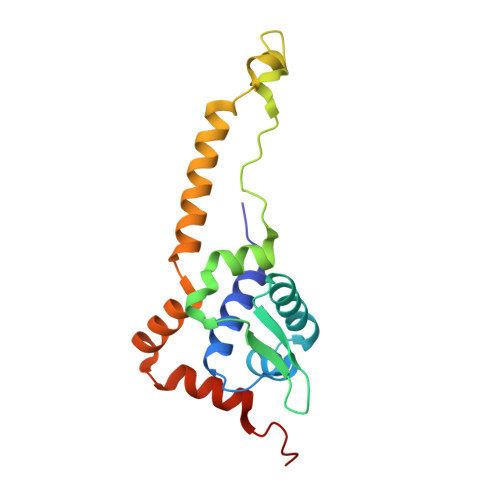Electron and Proton Transfers Modulate DNA Binding by the Transcription Regulator RsrR.
Crack, J.C., Amara, P., Volbeda, A., Mouesca, J.M., Rohac, R., Pellicer Martinez, M.T., Huang, C.Y., Gigarel, O., Rinaldi, C., Le Brun, N.E., Fontecilla-Camps, J.C.(2020) J Am Chem Soc 142: 5104-5116
- PubMed: 32078310
- DOI: https://doi.org/10.1021/jacs.9b12250
- Primary Citation of Related Structures:
6Y42, 6Y45 - PubMed Abstract:
The [Fe 2 S 2 ]-RsrR gene transcription regulator senses the redox status in bacteria by modulating DNA binding, while its cluster cycles between +1 and +2 states-only the latter binds DNA. We have previously shown that RsrR can undergo remarkable conformational changes involving a 100° rotation of tryptophan 9 between exposed ( Out ) and buried ( In ) states. Here, we have used the chemical modification of Trp9, site-directed mutagenesis, and crystallographic and computational chemical studies to show that (i) the Out and In states correspond to oxidized and reduced RsrR, respectively, (ii) His33 is protonated in the In state due to a change in its p K a caused by cluster reduction, and (iii) Trp9 rotation is conditioned by the response of its dipole moment to environmental electrostatic changes. Our findings illustrate a novel function of protonation resulting from electron transfer.
Organizational Affiliation:
Centre for Molecular and Structural Biochemistry, School of Chemistry, University of East Anglia, Norwich Research Park, Norwich NR4 7TJ, U.K.



















